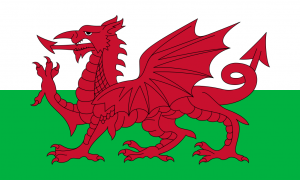Language/Welsh/Grammar/Describing-People
Introduction
In this lesson, you will learn how to use Welsh adjectives to describe people's appearance, personality, and character. Adjectives are essential for building sentences and communicating effectively in Welsh. Understanding the correct use of adjectives will allow you to express your thoughts and ideas more precisely.
Welsh is rich in adjectives, and this lesson will cover the basics of how to use them in context. You will be introduced to key vocabulary relating to describing people, and will learn how to form sentences correctly. Additionally, cultural information and interesting facts will be included throughout the lesson to make your learning experience more enjoyable and engaging.
Adjectives
Adjectives are describing words that give information about a noun or pronoun. They can be used to describe a person, place, or thing. In Welsh, adjectives come after the noun, and agree in gender and number.
For example:
- Person - "Mae e'n ddwylenog" (He is Welsh), where "ddwylenog" is the adjective describing the noun "e".
- Place - "Mae'r ddinas fawr" (The city is big), where "fawr" is the adjective describing the noun "dinas".
- Thing - "Mae'r llyfr yn dwt" (The book is heavy), where "dwt" is the adjective describing the noun "llyfr".
It is important to note that in Welsh, adjectives have different forms for different genders and numbers. The table below shows how the adjective "hapus" (happy) changes in gender and number:
| Welsh | Pronunciation | English |
|---|---|---|
| dyn hapus | din hă-pîss | happy man |
| merched hapus | mĕrkh-ĕd hă-pîss | happy girls |
| ty bach hapus | ti băkh hă-pîss | happy house |
| tai mawr hapus | taî măwr hă-pîss | happy houses |
In the table above, you can see how the adjective "hapus" changes with different gender and number. For example, "dyn hapus" means "happy man" and "merched hapus" means "happy girls". Note that the adjective "hapus" changes from "hapus" to "hă-pîss" to indicate the gender and number.
Describing People
Now that you understand the basics of adjectives in Welsh, let's look at how to use them to describe people's appearance, personality, and character.
Appearance
Welsh has a wide range of adjectives to describe someone's appearance. Below is a list of common adjectives and their translations:
- Mae e'n ddu - He is black (hair)
- Mae hi'n wyn - She is fair (skin)
- Mae e'n craff - He is stout (build)
- Mae hi'n hir - She is tall (height)
- Mae e'n brysur - He is busy (activity)
- Mae hi'n dlos - She is pretty (face)
It is important to note that these adjectives can be used to describe both men and women. Remember that in Welsh, adjectives agree in gender and number with the noun they are describing.
Personality and Character
Welsh adjectives can also be used to describe someone's personality and character. Below is a list of common adjectives and their translations:
- Mae e'n amyneddgar - He is patient
- Mae hi'n ddeallus - She is clever
- Mae e'n ddiflas - He is boring
- Mae hi'n hoff o anturiaethau - She is adventurous
- Mae e'n drwg - He is bad
- Mae hi'n dda - She is good
In Welsh culture, people tend to be modest when describing themselves, so it may be helpful to learn how to ask about someone's personality in Welsh. Below is a list of common questions and their translations:
- Sut wyt ti'n teimlo heddiw? - How are you feeling today?
- Ydy e'n flinderus? - Is he nervous?
- Ydy hi'n hyderus? - Is she confident?
- Ydy e'n hoff o addysg? - Is he fond of education?
- Ydy hi'n garedig? - Is she kind?
Exercise
Translate the following Welsh sentences into English:
- Mae hi'n wyn a chrewl -
- Mae e'n ddeallus a chariadus -
- Mae hi'n ddiffuant ac ystyriol -
- Mae e'n ddigalon a drist -
- Mae hi'n falch a brwdfrydig -
Answers:
- She is fair and cruel
- He is clever and loving
- She is shy and thoughtful
- He is sad and depressed
- She is proud and enthusiastic
Conclusion
In this lesson, you have learned how to use Welsh adjectives to describe people's appearance, personality, and character. Adjectives play a significant role in building sentences and communicating ideas in Welsh, and understanding their use will allow you to express yourself more effectively.
Remember that adjectives in Welsh change to agree with the gender and number of the noun they describe. Additionally, Welsh has a variety of adjectives to describe someone's appearance and personality, and cultural information and interesting facts have been included to make your learning experience more enjoyable.
Continue practicing your Welsh language skills regularly to become more comfortable expressing yourself in Welsh. Diolch am ddarllen! (Thank you for reading!)

